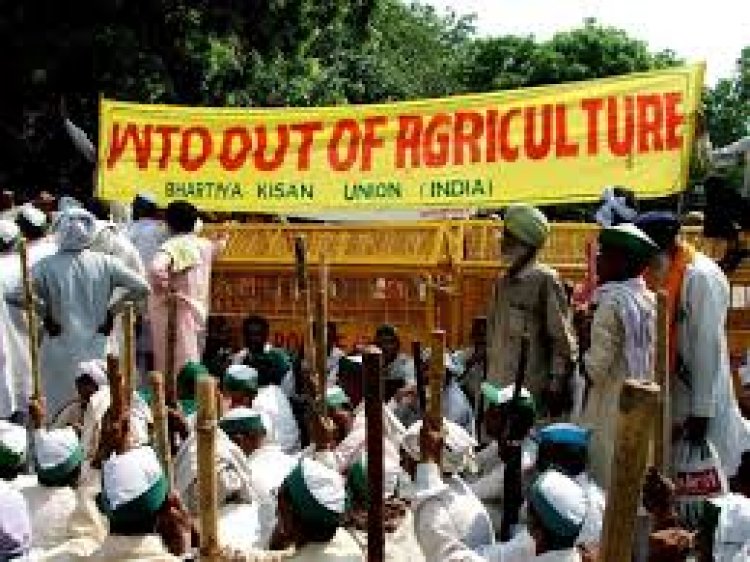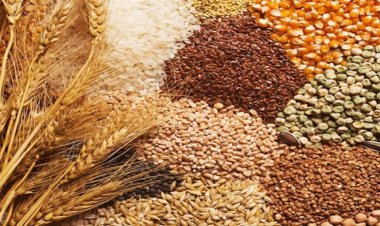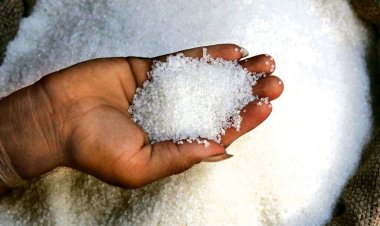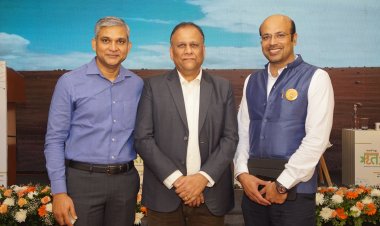Farm Subsidies and Why We Need Effective Disciplines in the WTO
Agricultural subsidies’ discipline of the Agreement on Agriculture (AoA) under the World Trade Organization (WTO) has raised several contentious issues due to its implications for global agricultural markets.

Agricultural subsidies’ discipline of the Agreement on Agriculture (AoA) under the World Trade Organization (WTO) has raised several contentious issues due to its implications for global agricultural markets. The AoA was adopted in order to establish a fair and market-oriented agricultural trading system by reining in subsidies granted tor production-related activities, besides lowering export subsidies and effecting liberalisation agricultural liberalisation. While WTO Members have significantly reduced export subsidies and have also reduced import tariffs to some extent, the volume of subsidies, especially granted by the larger countries, including the United States and the members of the European Union (EU), have remained sticky at high levels. Most of these subsidies are used to enhance commercial gains at the expense of agricultural producers in other countries. This paper argues that there is a need to re-work the AoA disciplines on subsidies; the level of subsidies that WTO members can provide should be related to the rationale for using the subsidies. Thus, subsidies that are of predatory nature, which have the potential of destabilising agriculture in other WTO members, must be curbed.
The US has been the largest provider of domestic support among all WTO Members. In 2017, the latest year for which data are available, domestic support spending of the US had exceeded $ 131 billion. Although its farm subsidies have been declining consistently since they had peaked at $147 billion in 2013, the level of support provided in 2017 was more than twice the level of subsidies in 1995. The EU, on the other hand, had reduced its agricultural subsidies until 2009/10, but since then its subsidies have remained almost stagnant. This shows that the EU was able to rein in its subsidies. Yet another evidence of this phenomenon is that while in 1995, the EU had a membership of 15, in 2017/18, its membership had increased to 28.
One important aspect of the EU/US domestic support programmes has been their focus on commodities in which the two WTO members have considerable presence in the global markets. Tables 5 and 6 provide the lists of products that have received high levels of price support in the US and the EU.
Table 6: Products Receiving High Product Specific Subsidies in the US (figs. in US $ million)
|
Products |
1995 |
2000 |
2005 |
2010 |
2015 |
2016 |
2017 |
|
Corn |
32.1 |
2756.7 |
4490.0 |
15.1 |
2362.1 |
2344.8 |
2198.8 |
|
Sugar |
1090.9 |
1177.5 |
1199.2 |
1267.3 |
1524.9 |
1517.3 |
1576.7 |
|
Soybeans |
16.3 |
3606.4 |
69.2 |
4.5 |
1391.5 |
1207.2 |
1626.7 |
|
Wheat |
5.0 |
847.2 |
28.9 |
111.9 |
854.9 |
911.5 |
603.8 |
|
Cotton |
32.0 |
1049.8 |
1620.7 |
81.2 |
853.1 |
833.7 |
952.1 |
|
Sorghum |
0.5 |
83.8 |
139.8 |
0.0 |
210.4 |
167.4 |
125.1 |
|
Rice |
11.6 |
624.4 |
132.5 |
9.6 |
60.1 |
86.2 |
64.9 |
Table 5: Products Receiving High Product Specific Subsidies in the EU (figs. in million Euros)
|
Products |
1995/96 |
2000/2001 |
2004/05 |
2009/10 |
2014/15 |
2015/16 |
2016/17 |
|
Butter |
4209.7 |
4443.5 |
4084.1 |
2723.0 |
2850.4 |
2976.6 |
3075.9 |
|
Common wheat |
2593.1 |
2270.7 |
1842.4 |
1917.5 |
2213.7 |
2273.6 |
2119.9 |
|
Skimmed milk powder |
1806.2 |
1507.6 |
1215.7 |
953.5 |
1476.4 |
1558.5 |
1549.3 |
|
Milk |
N.A. |
N.A. |
176.2 |
671.9 |
183.3 |
593.9 |
210.4 |
Sources (for Tables 5 and 6): Compiled from the Notifications submitted by the EU and the US in the WTO Committee on Agriculture
As can be seen from Table 3, the EU has provided high levels of subsidies to a few important dairy products and to wheat. Until the middle of the previous decade, producers of sugar were highly subsidised. After the WTO Dispute Settlement Body found that that the EU’s subsidies on sugar were not consistent with its commitment under the AoA, the sugar subsidies’ policy was discontinued.
The US has consistently subsidised all the major cereals. The focus of US’ subsidies was on was countercyclical measures since the resource intensive producers in the US had to be provided high levels of subsidies to remain in the business when the prices of these commodities were low. In fact, the obvious rationale for providing the subsidies was to help the EU and the US to maintain their high shares in the international markets, which they were able to ever since the WTO was established in 1995 (Tables 7 and 8).
Table 7: The EU’s Share in Global Exports of its Highly Subsidised Products (figs in %)
|
Products |
1995 |
2000 |
2005 |
2010 |
2016 |
|
Butter |
64.1 |
55.3 |
61.9 |
58.3 |
57.4 |
|
Common wheat |
31.7 |
27.8 |
27.6 |
35.0 |
36.0 |
|
Skimmed milk powder |
76.5 |
69.9 |
63.1 |
62.4 |
56.4 |
|
Milk |
94.2 |
93.0 |
90.4 |
90.6 |
85.8 |
Table 8: The US’ Share in Global Exports of its Highly Subsidised Products (figs in %)
|
Products |
1995 |
2000 |
2005 |
2010 |
2016 |
|
Corn |
77.0 |
58.2 |
50.1 |
46.8 |
38.0 |
|
Soybeans |
71.5 |
57.4 |
39.2 |
43.5 |
42.8 |
|
Wheat |
31.9 |
23.7 |
22.6 |
19.0 |
13.1 |
|
Cotton |
35.1 |
26.8 |
38.6 |
38.2 |
36.4 |
|
Sorghum |
83.6 |
77.4 |
85.2 |
61.4 |
79.2 |
Sources (for Tables 7 and 8): Author’s calculation based on data from FAOSTAT
The EU and the US maintained relatively high shares in the global exports of the commodities in which they reported significant levels of product specific support. However, in most products listed in the above tables, both these WTO members lost their export shares, with the US registering steep declines in its shares in soybeans and wheat, in case of the former due to the rise of Brazil, and in the latter, due to the Russian Federation. Competition faced by the EU and the US in their export markets has become the raison d'etre for their reliance on product specific subsidies.
The aforementioned evidence indicates that the agricultural sectors in the EU and the US are driven by their interests in trade. In most of the major commodities, and especially in case of the cereals, the EU and the US have high export dependency ratios. These figures become even more stark when compared with the corresponding figures from the two largest developing countries, namely, China and India. The tables below give the exports to production ratios for the three main cereals.
Table 9: Ratio of Exports to Production in Rice (%)
|
Years |
EU |
India |
US |
China |
|
1995 |
54.9 |
4.3 |
38.6 |
0.0 |
|
2000 |
57.4 |
1.2 |
31.0 |
1.6 |
|
2005 |
60.3 |
3.0 |
37.5 |
0.4 |
|
2010 |
61.3 |
1.5 |
34.0 |
0.3 |
|
2016 |
65.9 |
6.0 |
32.6 |
0.2 |
Table 10: Ratio of Exports to Production in Wheat (%)
|
Years |
EU |
India |
US |
China |
|
1995 |
26.9 |
1.0 |
54.6 |
0.0 |
|
2000 |
24.4 |
1.1 |
45.9 |
0.0 |
|
2005 |
24.4 |
1.1 |
47.5 |
0.3 |
|
2010 |
37.1 |
0.0 |
46.0 |
0.0 |
|
2016 |
45.7 |
0.2 |
38.3 |
0.0 |
Table 11: Ratio of Exports to Production in Maize (%)
|
Years |
EU |
India |
US |
China |
|
1995 |
17.1 |
0.2 |
32.0 |
0.1 |
|
2000 |
20.1 |
0.3 |
19.0 |
9.9 |
|
2005 |
19.4 |
2.9 |
16.1 |
6.2 |
|
2010 |
26.6 |
10.6 |
16.1 |
0.1 |
|
2016 |
27.1 |
1.9 |
14.6 |
0.0 |
Sources: (for Tables 9-11): Author’s calculation based on data from FAOSTAT
The above tables clearly indicate that cereal production in large developing countries like India and China overwhelmingly meets their domestic demand, a complete contrast to the situation in industrialised countries. It must be noted that China and India are among the largest producers of rice and also produce substantial amounts of wheat, but their exports of these commodities relatively small shares of their total production. It can, therefore, be concluded from the above discussion that while developed countries subsidise their agricultural sector for exploiting global markets, large developing countries use agricultural subsidies essentially to ensure domestic food security and to promote rural livelihoods.
Importantly, the AoA recognises in its preamble that the reform of agricultural policies initiated by the Agreement “should be made in an equitable way among all Members, having regard to non-trade concerns, including food security …”, but the rules and disciplines introduced by the Agreement do not, in any manner, operationalise the “non-trade concerns”. Further, the agenda for “continuation of the reform process” under AoA, spelt out in Article 20 of the Agreement stated that the negotiations should take into account “non-trade concerns, special and differential treatment to developing country Members, and the objective to establish a fair and market-oriented agricultural trading system …”
The Doha Ministerial Declaration, the first and the most expansive articulation by WTO members to reform the WTO, recognised the special character of agriculture in developing countries. The Ministers agreed “that special and differential treatment for developing countries shall be an integral part of all elements of the negotiations and shall be embodied in the Schedules of concessions and commitments and as appropriate in the rules and disciplines to be negotiated, so as to be operationally effective and to enable developing countries to effectively take account of their development needs, including food security and rural development”.
After the failed Cancun Ministerial Conference in 2003 derailed the Doha Development Agenda, WTO members put the process back on track through the so-called “August 1 Decision”, which yet again emphasised the need to adopt appropriate agricultural policies for the developing countries: “Agriculture is of critical importance to the economic development of developing country Members and they must be able to pursue agricultural policies that are supportive of their development goals, poverty reduction strategies, food security and livelihood concerns”.
It may be noted in this context that the Doha Round negotiations had considered proposals to amend AoA rules in an effort to make them respond to the needs of food security and rural development in developing countries. Two sets of proposals that made much progress in the negotiations were in the area of market access, namely, the proposal for designating “special products” and the “special safeguard mechanism”. Thus, while the need to protect developing country farmers from the uncertainties of the global marketplace was discussed, the fact that these that farmers in developing countries needed adequate support from their governments to meet their non-trade concerns like food security and livelihoods did not find much attention.
It follows from the above discussion that there is a strong case to differentiate between agricultural subsidies provided by WTO members on the basis of whether production systems in the countries are geared towards furthering commercial/trade interests or meeting domestic food security. At present, the subsidies’ disciplines of the AoA do not consider either the impact of domestic support measures on agricultural markets, or the categories of the producers benefiting from the subsidies, namely, small-scale producers or agri-business. Developing countries, therefore, need to initiate steps to amend the principles on which the AoA has laid down the subsidies’ disciplines, and to also ensure that subsidies contribute to the realisation of the twin objectives of food security and rural livelihoods in developing countries. Real reforms in the agricultural subsidies can only occur if the AoA is able to prevent the agri-business to continue its expansion using support from their home governments.
(The writer is Professor at Centre for Economic Studies and Planning, School of Social Sciences, Jawaharlal Nehru University )



 Join the RuralVoice whatsapp group
Join the RuralVoice whatsapp group








































